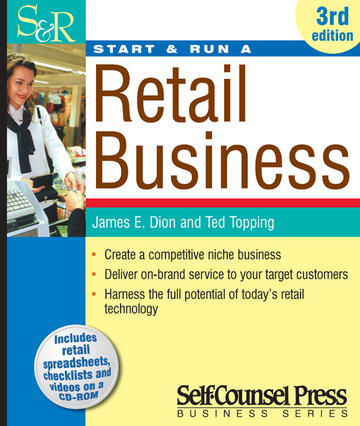
Start & Run a Retail Business
Description
Thirty-five years ago, opening and operating a retail business was a fairly straightforward process. But things have changed dramatically. Owner-operated retailers now face competition from category killers, multinational big-box retailers, and even “stores” that exist only on the Internet. Recognizing just how much the retail business has changed, aThirty-five years ago, opening and operating a retail business was a fairly straightforward process. But things have changed dramatically. Owner-operated retailers now face competition from category killers, multinational big-box retailers, and even “stores” that exist only on the Internet. Recognizing just how much the retail business has changed, authors Jim Dion and Ted Topping offer a different kind of how-to book, painting a clear picture of how an owner-operated retail business can thrive in today’s competitive marketplace. They even help you take the first concrete steps toward your dream–a bonus that has made this title a consistent seller. Start and Run a Retail Business is as much a valuable guide for owner-operated retailers working now as it is for people just starting out.
With a practical and real world approach, the authors describe in detail the major aspects of running a profitable retail business. By examining retail from a customer’s perspective—and focusing on the in-store experience—this book will help you meet the challenges of today?s retail world head on. Topics covered include: the basics of retail; merchandising; buying; human resources; sales management; technology; customer service and the in-store experience authors Jim Dion and Ted Topping offer a different kind of how-to book, painting a clear picture of how an owner-operated retail business can thrive in today’s competitive marketplace. They even help you take the first concrete steps toward your dream–a bonus that has made this title a consistent seller. Start and Run a Retail Business is as much a valuable guide for owner-operated retailers working now as it is for people just starting out. With a practical and real world approach, the authors describe in detail the major aspects of running a profitable retail business. By examining retail from a customer’s perspective–and focusing on the in-store experience–this book will help you meet the challenges of today’s retail world head on.